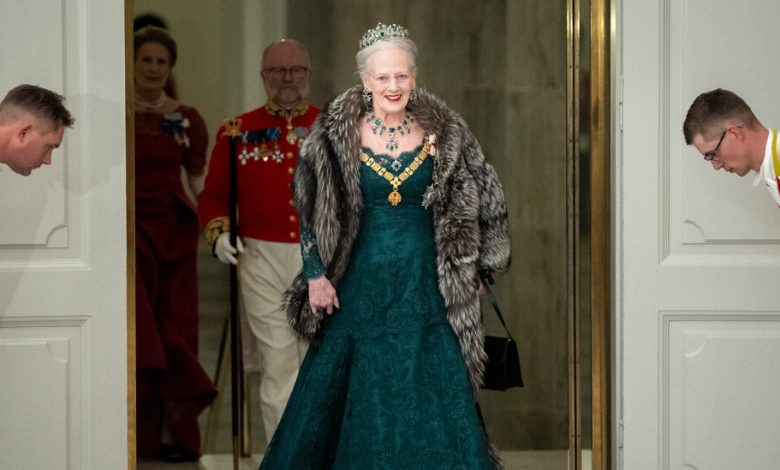Queen Margrethe II of Denmark to Step Down

Queen Margrethe II of Denmark, the longest-serving monarch in Europe, unexpectedly declared that she would abdicate her throne after more than a half-century, announcing in her New Year’s speech on Sunday that her eldest son, Crown Prince Frederik, would succeed her.
In her speech, Margrethe, 83, said that her age and health were factors in her decision after more than 50 years as queen. “Such a long time does not pass unnoticed for anyone — not even me,” she said. “Time wears, and ailments increase.”
In particular, she said, a back surgery she underwent this year was a factor in making her “think about the future — whether it was time to hand over responsibility to the next generation.”
“I have decided that now is the right time,” she said in her speech. “Fifty-two years after I succeeded my beloved father, I will step down as queen of Denmark.”
She said she would step down on Jan. 14. The crown prince, Frederik, is 55.
Margrethe, the eldest of three daughters of King Frederik IX and Queen Ingrid, acceded to the throne after her father’s death in 1972 — and after Denmark made a constitutional change to allow female succession, allowing the king to pass over his brother for Margrethe, his eldest child.
Denmark’s royal family, like its British counterpart, holds a largely ceremonial role under a parliamentary government. But Margrethe has been credited with modernizing the Danish monarchy and restoring its popularity.
Prime Minister Mette Frederiksen — who will become the first female prime minister to proclaim a new monarch — thanked the queen in a statement.
“Although the duty and role of the sovereign have been inherited for over 1,000 years, it is still difficult to comprehend that the time has come for a change of throne,” Ms. Frederiksen said. “Many of us have never known another monarch. Queen Margrethe is the epitome of Denmark, and, throughout the years, has articulated the words and emotions that define us as a people and a nation.”
In her speech, Margrethe thanked the Danish people for their support, as well as “the successive governments, with whom it has always been rewarding to work, and to the Danish Parliament, which has always trusted me.”
Much of the queen’s popularity has been tied to her personality and artistic streak. Even after she entered the line of succession at 13, she pursued her interest in art, earning a diploma in prehistoric archaeology at the University of Cambridge and studying at Aarhus University in Denmark, the Sorbonne and the London School of Economics.
She also produced her own artwork, including paintings shown in museums, decoupages — a type of cut-and-paste artwork — and drawings. (Her illustrations were adapted for a “Lord of the Ring” book under a pseudonym, Ingahild Grathmer; the book’s publisher approached her after she sent copies to J.R.R. Tolkien as fan mail in 1970.)
More recently, she served as the costume and production designer for “Ehrengard: The Art of Seduction,” a Netflix film adapting a fairy tale, that includes wardrobes and sets based on her drawings and other artworks. “I work when I can find the time,” she told The New York Times this past year, “and I seem usually to be able to find the time.”
Though Margrethe has largely avoided the tabloid controversies that have plagued other royals around Europe, her family members have drawn headlines in the past. Her husband, Prince Henrik, had long complained about not being called king or king consort, and about relying on Margrethe for funds. He eventually received a salary, but in 2017, he announced at 83 years old that he no longer wished to be buried alongside the queen.
He died six months later and was reportedly cremated, with half of his ashes spread over Danish waters and the other buried in the private gardens of a castle north of Copenhagen.
The queen also drew complaints from family members in 2022, after she stripped four of her grandchildren of their royal titles.
Maya Tekeli contributed reporting.



